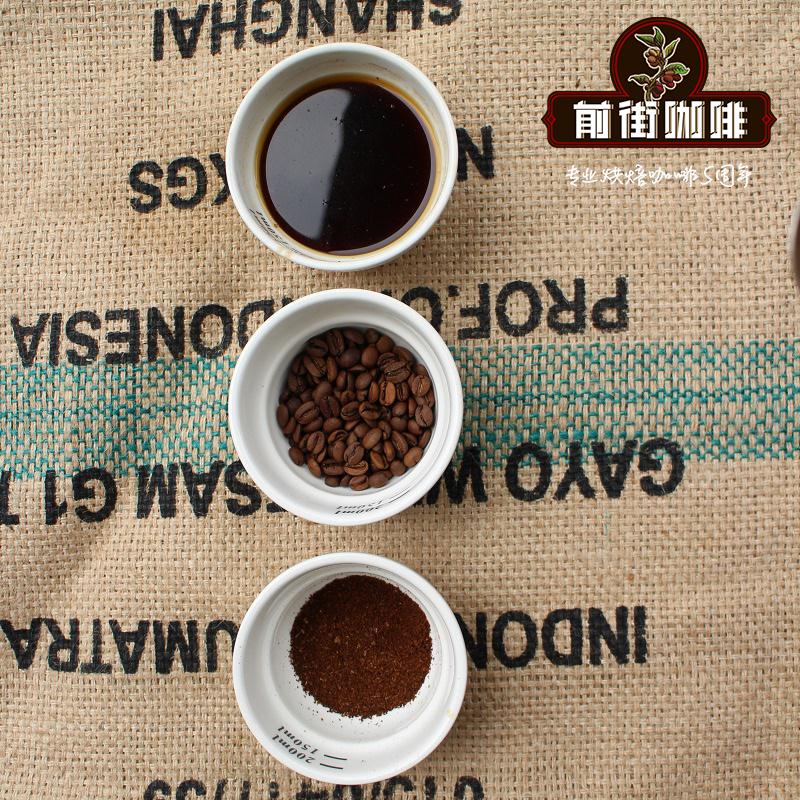Introduction of coffee producing areas in El Salvador and what are the characteristics of coffee flavor
Salvadoran coffee ranks side by side with Mexico and Guatemala as the producers of Asa and Merdo, and is fighting for the top one or two places in China and the United States with other countries. The highlands of origin are large coffee beans of all sizes, which are fragrant and mild in taste.
Like Guatemala and Costa Rica, coffee in El Salvador is graded according to altitude. The higher the altitude, the better the coffee. It is divided into three grades according to elevation: SHB (strictly high grown) = highlands, HEC (high grown central) = mid-highlands, and CS (central standard) = lowlands. The best brand is Pipil, the Aztec-Mayan name for coffee, which has been recognized by the American Organic Certification Society (Organic Certified lnstitut eof America) that Salvadoran coffee is a specialty of Central America, where it is light, aromatic, pure and slightly sour.
Pacamara coffee is a hybrid of Pacas Pacas (a sudden variant of the bourbon species) and giant bean Maragogype (elephant bean) found in El Salvador in the 1950s.
The coffee harvest lasts from November to March. The fresh fruit of coffee is picked by hand. Coffee in El Salvador is grown mostly by small farmers, who grow it in the traditional way: almost 100% shade. The coffee harvest lasts from November to March. El Salvador boutique coffee is picked by hand in Santa Ana in the west and Charantan fruit volcanic rock producing areas in the northwest. The top 10 cup tests in recent years almost all come from these two producing areas, with an altitude of about 9-1500 meters, mainly bourbon (68%), followed by Pacas (29%), mixed-race Pacamara, Duraai and Kaddura only account for 3%.
First bred by researchers in El Salvador in 1958, Pacamara is a rare artificially bred excellent variety, with both the excellent taste of Pacas and the large size of Maragogype, and the bean body is at least 70% or 80% the size of the bean. The biggest characteristic of this variety is that it is sour, lively and tricky, sometimes biscuit and sometimes fruity, with excellent thickness and grease.
The biggest feature of this variety is that it is sour, lively and tricky, sometimes biscuit, sometimes fruity, thick and greasy. Don't underestimate El Salvador's coffee production with the best quality from El Salvador and Guatemala. In its heyday, it was once the fourth largest coffee producer in the world, but decades of civil war almost dragged down the coffee industry. fortunately, the war has stopped in recent years, and the coffee industry has come back to life. The only benefit that the civil war brought to the Salvadoran country was that the farmers' fields were barren and failed to catch up with the most popular Katimo exposure train in the past two decades, thus preserving the ancient varieties of bourbon and Tibica, that is to say, El Salvador still uses the most traditional shade planting, which is of positive significance to the aroma of coffee.
Like Guatemala and Costa Rica, coffee in El Salvador is graded according to altitude, and the higher the altitude, the better the coffee. The best brand is Pipil, which is what the Azbec-Mayan (AztecMayan) called coffee, which has been approved by the American Organic Certification Society (Organic Certified Institute of America).
Flavor: imported black plum, grapefruit, citrus acid notes, nuts, chocolate, Xuanmi tea aftertaste, sucrose sweet, obvious juice feeling.

Important Notice :
前街咖啡 FrontStreet Coffee has moved to new addredd:
FrontStreet Coffee Address: 315,Donghua East Road,GuangZhou
Tel:020 38364473
- Prev

Introduction to the Flavor characteristics of Water-washed Yega Chuefeiwaka
Yirga cheffe is a small town in Ethiopia, 1700-2100 meters above sea level. It is also synonymous with Ethiopian boutique coffee. Since ancient times, this is a wetland, the ancient saying Yega yirga, meaning to settle down, and cheffe means wetlands, so Yega Xuefei means to let us settle down in this wetland. This bean comes from a single farm, Ethiopia.
- Next

Old mantelin is old mantelin? Why wet planing?
Old mantning varieties: Caturra, Typica, Sidikalong Soil: volcanic soil Elevation: 1500m Treatment: aged bean treatment The most famous origin of Asian coffee is the islands of Malaysia: Sumatra, Java, Kalimantan. Sumatra mantning coffee from Sumatra, Indonesia, is the most famous, and it has two flavors.
Related
- Detailed explanation of Jadeite planting Land in Panamanian Jadeite Manor introduction to the grading system of Jadeite competitive bidding, Red bid, Green bid and Rose Summer
- Story of Coffee planting in Brenka region of Costa Rica Stonehenge Manor anaerobic heavy honey treatment of flavor mouth
- What's on the barrel of Blue Mountain Coffee beans?
- Can American coffee also pull flowers? How to use hot American style to pull out a good-looking pattern?
- Can you make a cold extract with coffee beans? What is the right proportion for cold-extracted coffee formula?
- Indonesian PWN Gold Mandrine Coffee Origin Features Flavor How to Chong? Mandolin coffee is American.
- A brief introduction to the flavor characteristics of Brazilian yellow bourbon coffee beans
- What is the effect of different water quality on the flavor of cold-extracted coffee? What kind of water is best for brewing coffee?
- Why do you think of Rose Summer whenever you mention Panamanian coffee?
- Introduction to the characteristics of authentic blue mountain coffee bean producing areas? What is the CIB Coffee Authority in Jamaica?

